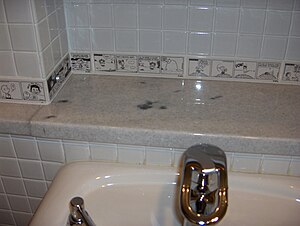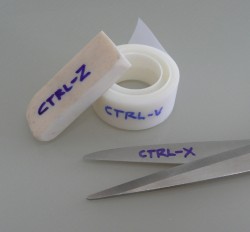How big should your mailing list be? What’s the best list size? 100 names? 1,000? 10,000? More? By list I mean email, Twitter followers, or even (gasp) snail mail.
Someone was asking the other day whether theirs was large enough. And if people would buy things from a free email newsletter.
The answer is that they will buy. Not all of them, but they will, as long as two things happen. One, you have been sending them relevant, useful information and two, whatever you’re offering for sale in your newsletter is also relevant and useful to them. If your newsletter is all about gardening tips, you’re not likely to sell your subscribers on a set of dental tools (no matter how good a deal they are).
How big should your mailing list be?
There is no perfect list size. There is a right size for your needs, your market, and your industry. That just means that your list has to be big enough and responsive enough to support your marketing goals.
If your response rate is low, your list will have to be larger; if it’s high, you can get away with a smaller list and still get the same return.
There are three things (primarily) that affect the response you get.
List cleanliness
Is your list up-to-date?
Long ago, I worked for a company that hadn’t cleaned their list in a very long time. When they finally decided to do something, the guy they hired called me (I was marketing manager at the time) and said, “You have to come see this.” He took me into a room that was about 10 x 6 feet (roughly 3 x 2 meters). It was FULL of returned mail. They were mailing to companies that had closed, people who had left, and people who were deceased. Big waste of time and money!
If it’s an email list, and you’re using an email service provider (such as AWeber or MailChimp), most of this gets taken care of automagically. New signups are added, and unsubscribers are removed. You’ll still need to check for other things, such as opens and bounce rate.
If you’ve got a snail mail list, when something comes back, go update your list (or get someone else to do it). Don’t wait until the returned mail piles up! And don’t waste your money mailing to dead people.
Think less about size and more about responsiveness, relevance, and permission. Those aren’t size measures, they’re quality measures, which is what really matters, not absolute size.
Responsiveness
Some people are buyers, some are not. You can have people who are just at the beginning of looking for something (doing research on a new washing machine, for instance), or people who are ready to buy (my washing machine is broken, I need a new one).
Look to see who’s buying (and who isn’t)— and what they buy. If you see certain people are buying lots of gardening tools from your home improvement site start a separate gardening tools list. If you have a separate business that sells dental instruments, don’t try to sell them to your garden lovers.
Relevance
See my gardening comment. The important thing isn’t the size of the list as much as how relevant your information is to your subscribers’ needs. If you’ve got a list of 2,000 rabid, raving medieval jousting fans, they will want armor, lances, helmets, and banners. And they will want all of it. Find those people (that tribe of 2,000) and they will buy and buy and buy from you.
Permission
Your list will do better, regardless of size, if you only add people who want to be added. Use double opt-in (meaning that subscribing requires two steps, signing up and confirming that sign up). Don’t add people who you met at conferences, or who attended events where you spoke, unless they request it.
I just unsubscribed from an event invite service. A newsletter I do subscribe to used this service to create an event that I attended. That invite service kept the names and started spamming me with more (unwanted) invitations.
When you’re building your mailing list, concentrate on relevance, cleanliness, and, permission, and responsiveness—not size. Bragging about a list of 150,000 people is fun—but that list is useless if 95% of them never open your emails or half your messages bounce.




